

Fly Time
3.5 Hours
Currency
Thai Baht (THB)
Local Transfer
Taxis, Tuk-tuks, Domestic Flights


3.5 Hours
Thai Baht (THB)
Taxis, Tuk-tuks, Domestic Flights
Thailand Time (UTC/GMT +7:00 hours)
Visa on Arrival or Visa Exemption
0
About
Thailand
Thailand is the travel hub of Southeast Asia. It’s the region’s most visited country and most backpackers make it their starting point for traveling around the region. With its lush jungles, postcard perfect beaches, world-class diving, mind-blowing cuisine, and cheap prices, Thailand is actually my favorite country in the world! I’ve been coming to the country since 2005, lived there for 2 years, and always seem to be pulled back. It’s an easy country to travel around and, because of the vibrant backpacker scene, you can meet a lot of other people there (so fear not solo traveler, you will make friends!).
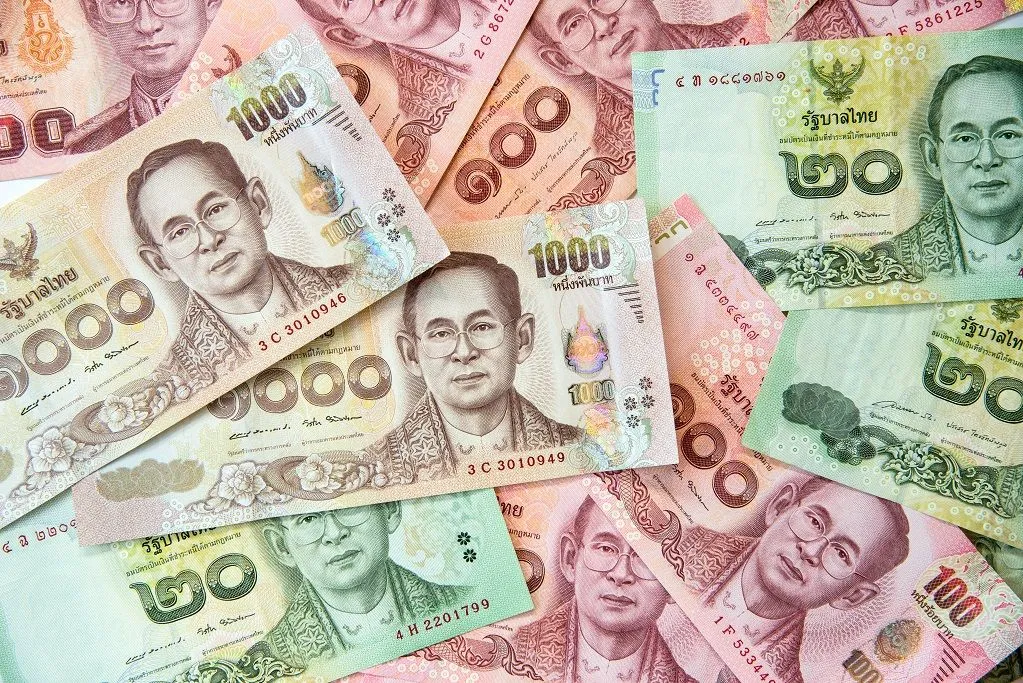

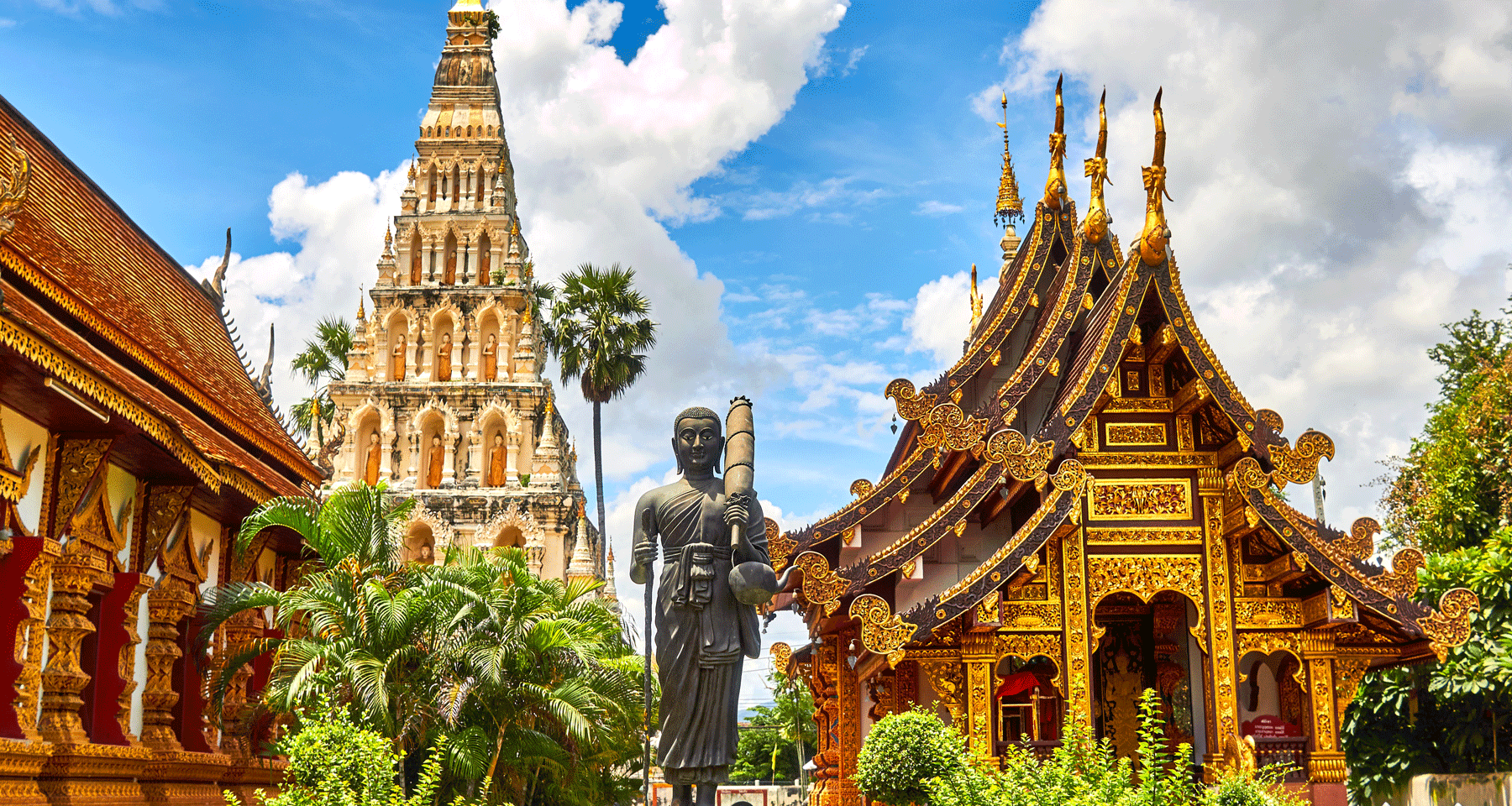
Thailand’s historical and cultural heritage has been shaped by interactions with neighboring cultures as well as far-reaching cultures such as Indian, Chinese, Japanese, Khmer, Portuguese, and Persian, with the ancient city of Ayutthaya serving as a global trade center. Early European visitors also recognized Ayutthaya as one of the great powers of Asia, alongside China and India, highlighting the city’s importance and influence in the region. In modern times, Thailand’s cultural landscape has been shaped by the influence of global trends. This includes the adoption of modern educational practices and the promotion of science and technology, while also preserving traditional customs and practices.

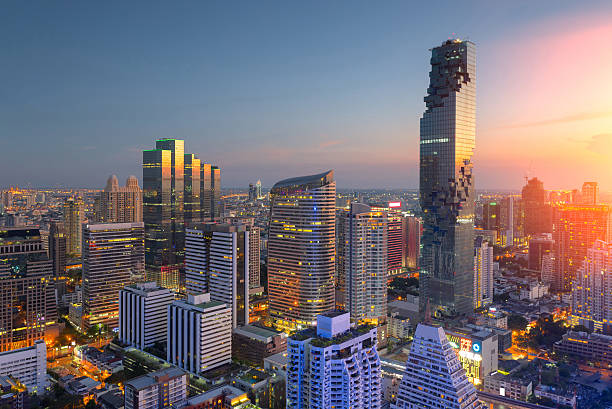
Bangkok is a chaotic, must-see city. Here you can explore temples, royal palaces, amazing markets, one of the craziest nightlife scenes in the world, and, of course, eat all the amazing Thai food. Check out Khao San Road to see the backpacker’s haven, Thong Lor/Ekamai for local Thai nightlife, see the Grand Palace’s beautiful artwork and the Emerald Buddha, and shop at Chatuchak Weekend Market. Bangkok is an onion that requires time to peel back. There’s a lot to do there, especially when you get off the tourist trail.
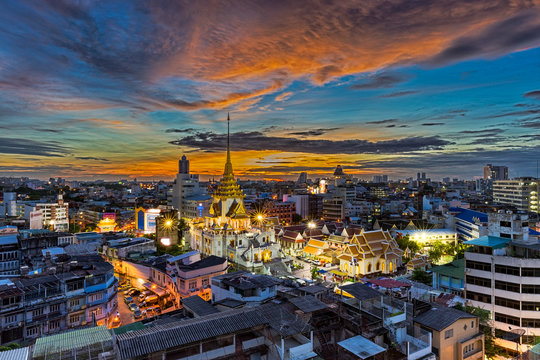
Chiang Mai is a city filled with lots of temples, incredible food markets, night markets, cafes, and a chill vibe. It’s a good launching pad for multi-day jungle tours, adventure activities, or visits to the nearby elephant sanctuaries where you can volunteer to help rescued elephants. And be sure to head to Wat Doi Suthep, Chiang Mai’s most famous temple (the pagoda supposedly contains relics of Buddha himself). Chiang Mai is also considered one of the foodie capitals of the country (which says a lot!) so be sure to get your fill of food. There’s also a big jazz scene here and you can find a lot of jazz bars in the old city.
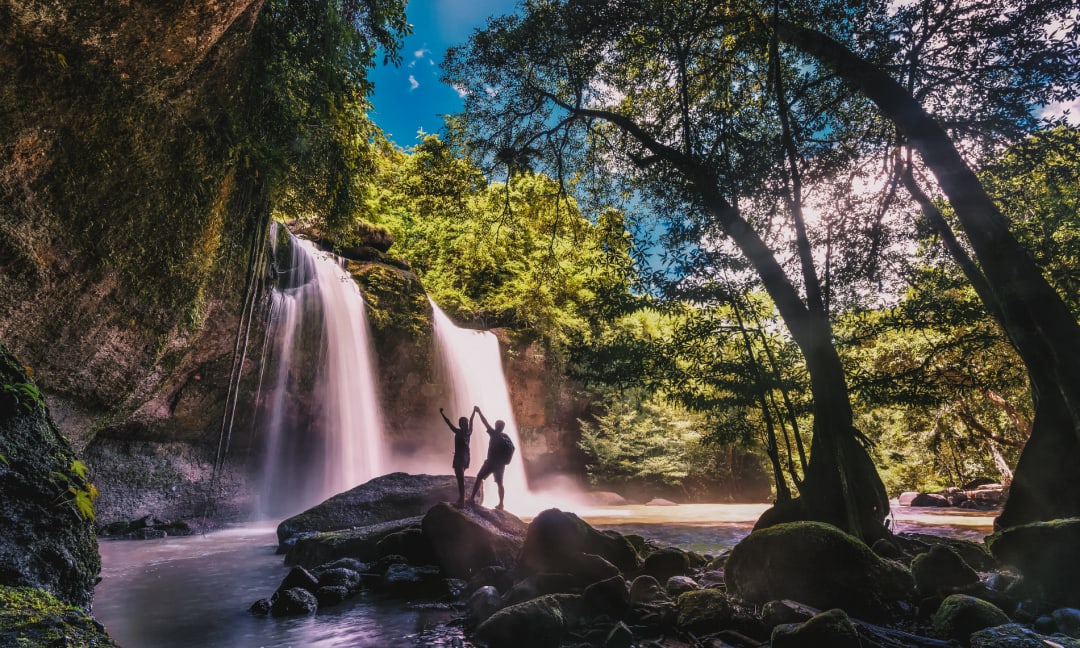
Khao Yai National Park, located about 2.5 hours north of Bangkok, is one of Thailand’s best national parks. The park is covered in rainforests, evergreen forests, and grasslands. It’s visually stunning, filled with lush flora and fauna, plus lots of waterfalls and hiking trails. There are a ton of interesting mammals within the park, like northern pig-tailed macaques, sun bears, barking deer, otters, jackals, and even a few wild elephants. It’s also home to rare birds and fascinating reptiles. It’s an absolute must-visit place. Stay at the Greenleaf Guesthouse for the best tour/accommodation deals in the area.
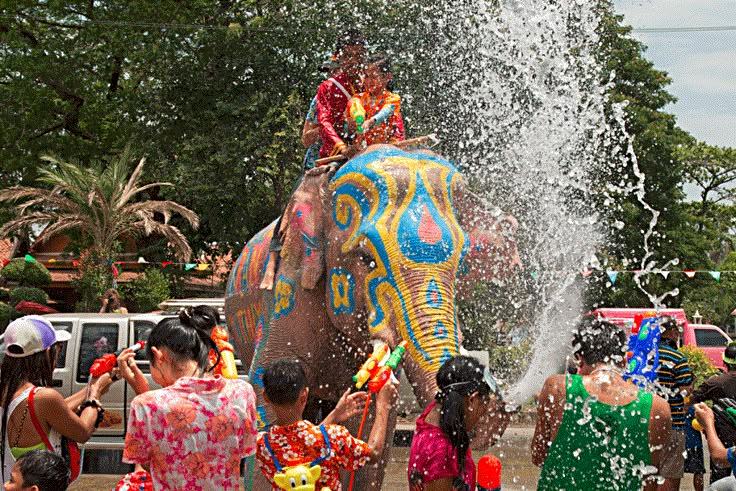
Every April, Thais celebrate their new year by holding an enormous, three-day water fight. Songkran is meant to wash away the old and begin the year anew. This once-in-a-lifetime water party is the biggest in Bangkok and Chiang Mai so book your hostel ahead of time. In Bangkok, there’s an opening ceremony at Wat Pho temple where they bathe the Buddha. The whole country turns into a big water fight and everyone plays along. If you’re around Songkran, be prepared to get wet everywhere you go those days (so keep your electronics sealed in plastic). Everyone outside is fair game.
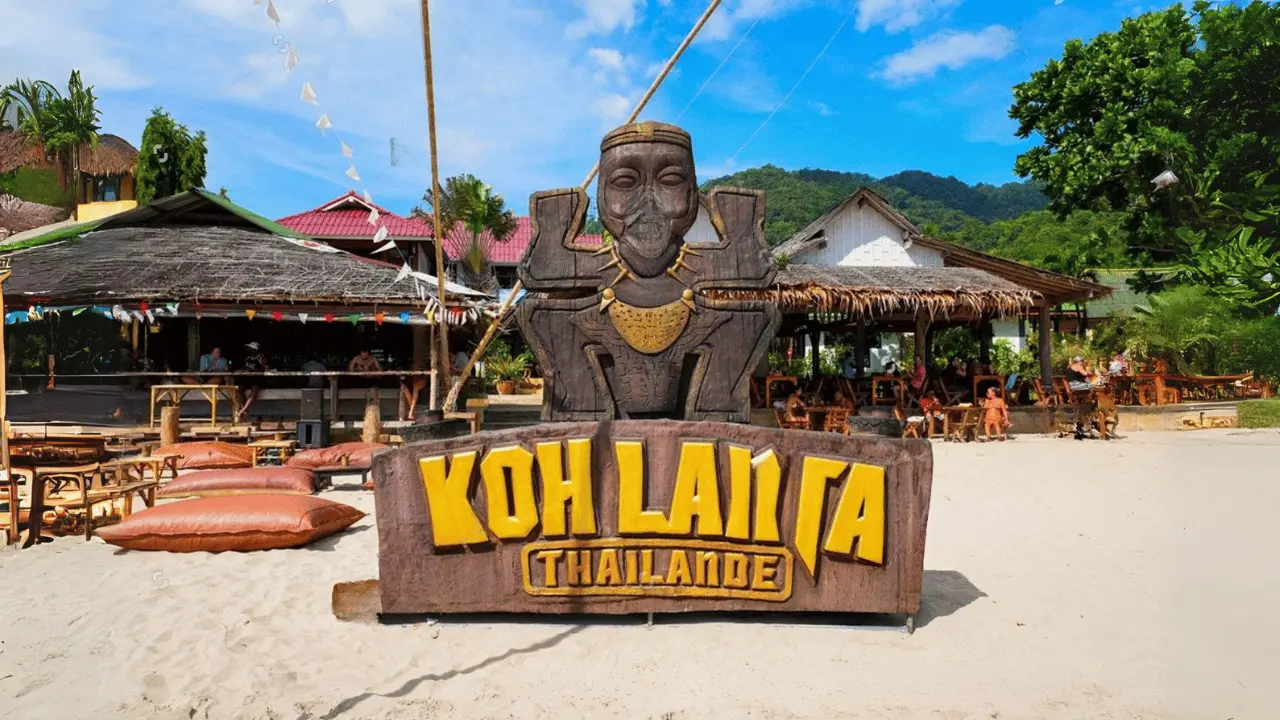
While Ko Lanta has become more developed in recent years, it’s still a paradise compared to its more developed neighbors. Wide, white sand beaches, cheap and delicious food, gorgeous sunsets, great caves, snorkeling, and diving make this one of my favorite spots in the country. It’s a very chill island where you still get a taste of “old Thailand before the resorts came”. For fun day trips, check out the Trang Islands, with their beautiful limestone formations stretching out of the water or head to Ko Rok for kayaking. Ko Lanta is one of the best islands in all of Thailand.
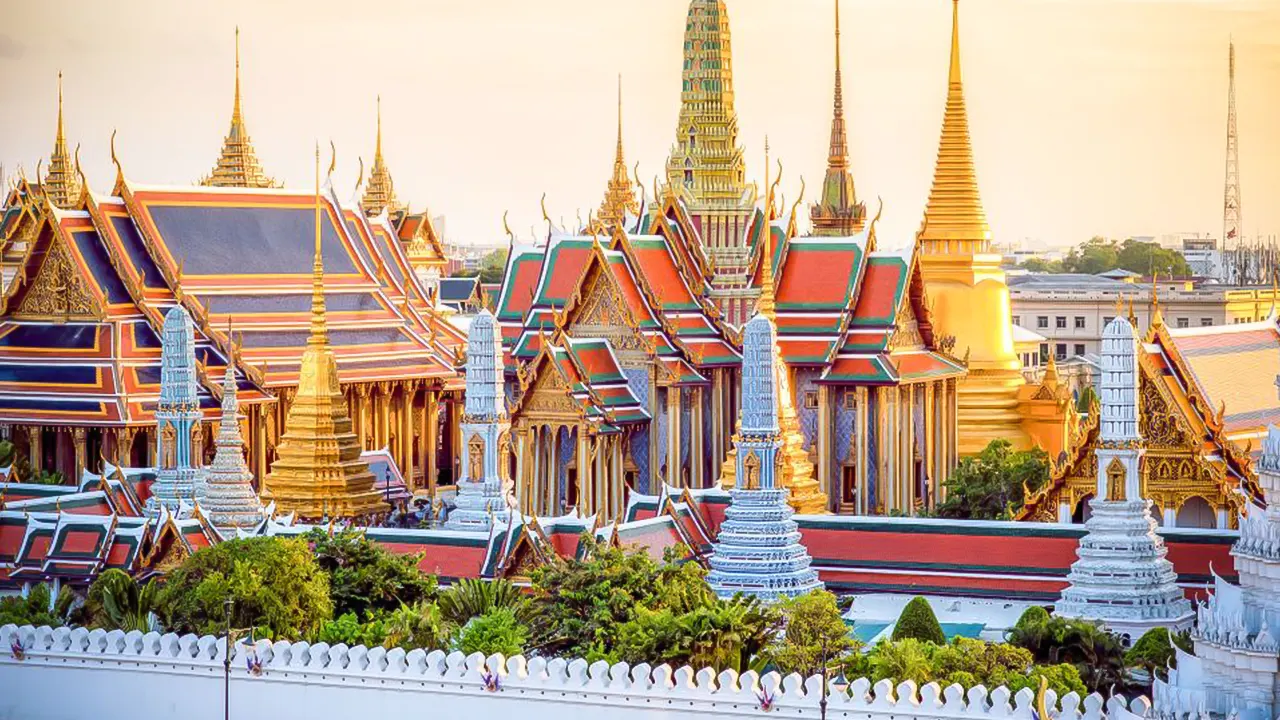
Thailand’s royal palace, built at the end of the 18th century by King Rama I, is the official residence of the current monarch (though he doesn’t live there anymore; now it’s just used for ceremonies). It’s a striking place filled with numerous temples, including Wat Pra Kaeo, which houses the 15th-century Emerald Buddha. The architecture here is absolutely stunning. I highly recommend taking a guided tour as the signage here is minimal. Nearby Wat Pho is famous for two things: a 150 foot (46 meters) reclining Buddha statue and a very relaxing massage school. The temple is wonderful and the statue really impressive. Both can be done back-to-back and should not be missed.

Bangkok is a chaotic, must-see city. Here you can explore temples, royal palaces, amazing markets, one of the craziest nightlife scenes in the world, and, of course, eat all the amazing Thai food. Check out Khao San Road to see the backpacker’s haven, Thong Lor/Ekamai for local Thai nightlife, see the Grand Palace’s beautiful artwork and the Emerald Buddha, and shop at Chatuchak Weekend Market. Bangkok is an onion that requires time to peel back. There’s a lot to do there, especially when you get off the tourist trail.

Chiang Mai is a city filled with lots of temples, incredible food markets, night markets, cafes, and a chill vibe. It’s a good launching pad for multi-day jungle tours, adventure activities, or visits to the nearby elephant sanctuaries where you can volunteer to help rescued elephants. And be sure to head to Wat Doi Suthep, Chiang Mai’s most famous temple (the pagoda supposedly contains relics of Buddha himself). Chiang Mai is also considered one of the foodie capitals of the country (which says a lot!) so be sure to get your fill of food. There’s also a big jazz scene here and you can find a lot of jazz bars in the old city.

Khao Yai National Park, located about 2.5 hours north of Bangkok, is one of Thailand’s best national parks. The park is covered in rainforests, evergreen forests, and grasslands. It’s visually stunning, filled with lush flora and fauna, plus lots of waterfalls and hiking trails. There are a ton of interesting mammals within the park, like northern pig-tailed macaques, sun bears, barking deer, otters, jackals, and even a few wild elephants. It’s also home to rare birds and fascinating reptiles. It’s an absolute must-visit place. Stay at the Greenleaf Guesthouse for the best tour/accommodation deals in the area.

Every April, Thais celebrate their new year by holding an enormous, three-day water fight. Songkran is meant to wash away the old and begin the year anew. This once-in-a-lifetime water party is the biggest in Bangkok and Chiang Mai so book your hostel ahead of time. In Bangkok, there’s an opening ceremony at Wat Pho temple where they bathe the Buddha. The whole country turns into a big water fight and everyone plays along. If you’re around Songkran, be prepared to get wet everywhere you go those days (so keep your electronics sealed in plastic). Everyone outside is fair game.

While Ko Lanta has become more developed in recent years, it’s still a paradise compared to its more developed neighbors. Wide, white sand beaches, cheap and delicious food, gorgeous sunsets, great caves, snorkeling, and diving make this one of my favorite spots in the country. It’s a very chill island where you still get a taste of “old Thailand before the resorts came”. For fun day trips, check out the Trang Islands, with their beautiful limestone formations stretching out of the water or head to Ko Rok for kayaking. Ko Lanta is one of the best islands in all of Thailand.

Thailand’s royal palace, built at the end of the 18th century by King Rama I, is the official residence of the current monarch (though he doesn’t live there anymore; now it’s just used for ceremonies). It’s a striking place filled with numerous temples, including Wat Pra Kaeo, which houses the 15th-century Emerald Buddha. The architecture here is absolutely stunning. I highly recommend taking a guided tour as the signage here is minimal. Nearby Wat Pho is famous for two things: a 150 foot (46 meters) reclining Buddha statue and a very relaxing massage school. The temple is wonderful and the statue really impressive. Both can be done back-to-back and should not be missed.
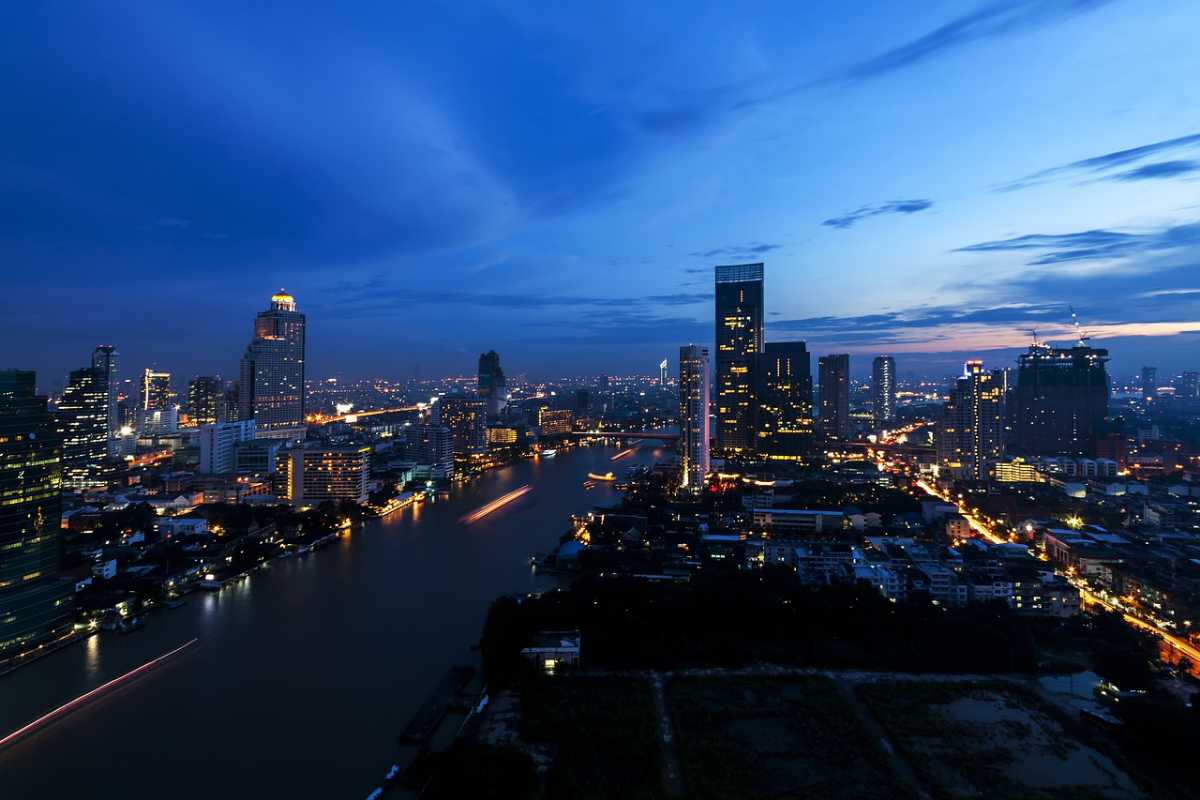
Glittering with lights, a lot of hustle bustle and a little bit of chaos, Bangkok is the capital city of Thailand and is packed with tourist attractions – historical, religious or natural. A haven for shoppers, it attracts people from all over the world to its markets. It is often touted as the party capital of South East Asia. Bangkok also offers a bundle of fantastic street food, non-stop action and unforgettable experiences.
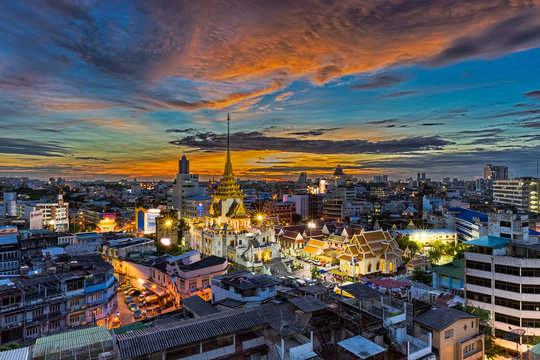
Chiang Mai, a respite from the heavy duty travelling one experiences in South Thailand, is a haven for backpackers and travellers. With an ancient city nestled between a sprawling modern city, flaked by lush green fields of the countryside, Chiang Mai will engage all senses in the one hungry for travel stories and experiences.
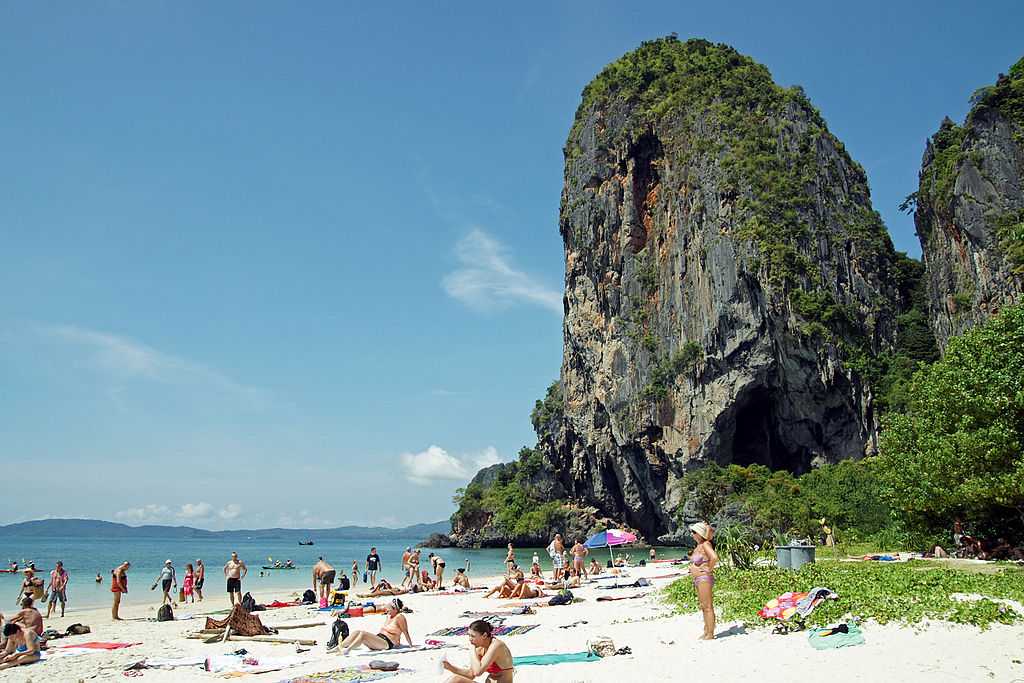
Although it doesn’t have any beaches of its own, Krabi Town is a charming choice for people who want to experience a very local Thai culture. Most tourists use this town majorly as a pass through to go to the nearby island towns, but Krabi in itself is very beautiful, especially in terms of its markets and restaurants.
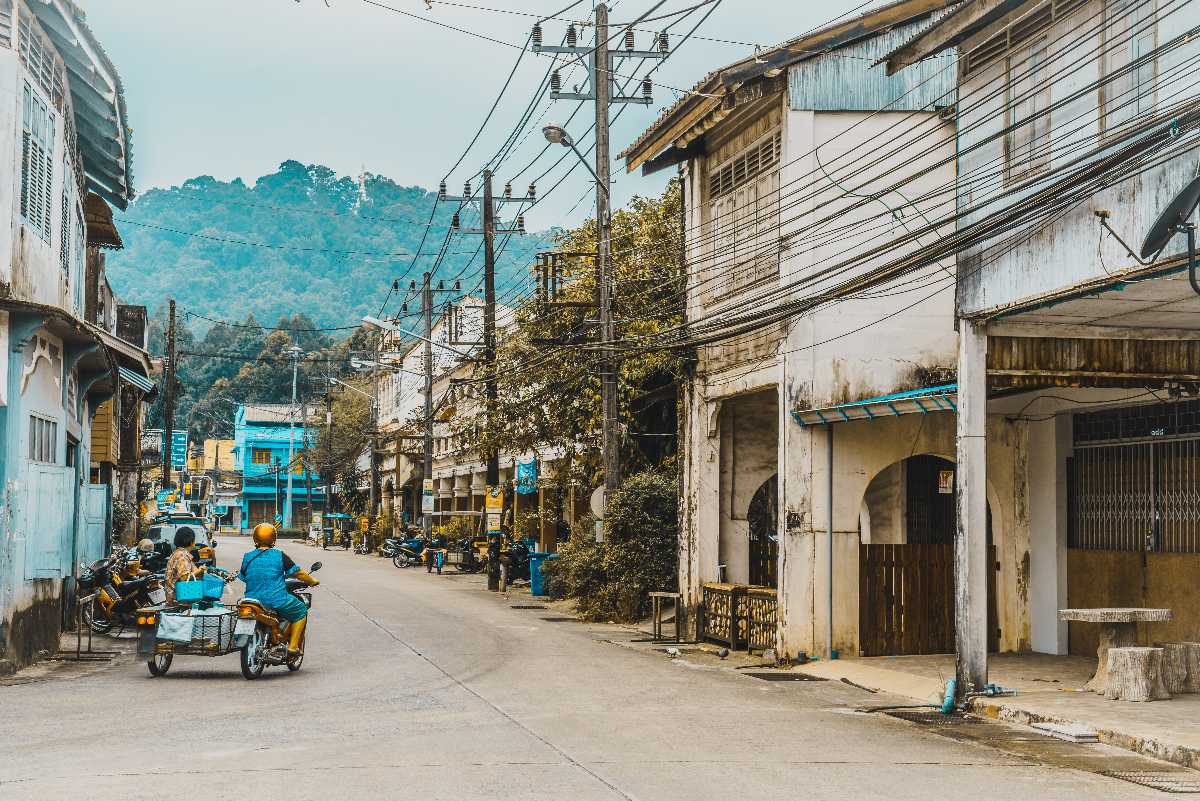
The old town of Phuket is a place that takes one to the cultural walk amid all the beautiful traditional architectures and markets. Located on the east side of the Phuket Island, Phuket Old Town is capital of the island with coloured wit various shades of culture. One can enjoy the traditional and Sino-Portuguese architecture of the town that was built during 19th century. However, not many tourists have the town on their itinerary that flourished from the tin trade. The aroma of spices wafting from various cafes and restaurants may water your mouth as you stroll across the streets including Dubik, Ranong, Rasada, Yaowarat, Krabi and Thalang. The place is also a paradise for history lovers and photography buffs.

Surin, a city known for its sericulture and elephants, is now aspiring to become a global tourist centre. Visitors often drop in for 1-2 days from November to March since this city does not have too many things to do, and is often left quiet for the rest of the year. However, with the influx of tourists in Thailand, Surin has seen many changes recently. From food to shopping to historical monuments, this city has gained momentum over the years.
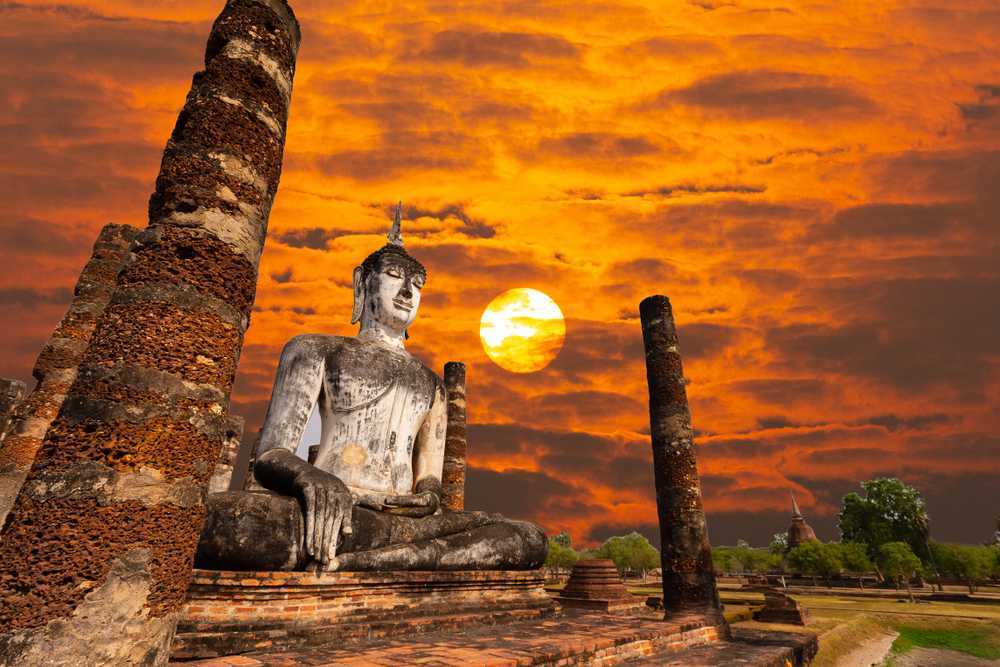
Sukhothai is home to approximately 190 ancient sites and temple ruins. It is known to mark the beginning of the Thai civilisation. Most of the monuments and ruins are restored at the Sukhothai Historical Park, which has been designated as a UNESCO World Heritage Site.
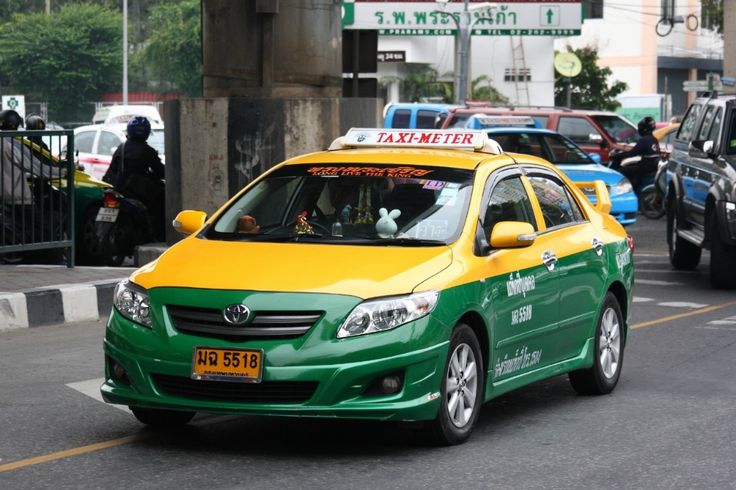
Metered taxi rides are usually 60-100 THB each. Always stick to the metered taxis, otherwise, you’ll get charged an overpriced ride. If you notice your driver not using the meter, get out and find a driver who will.
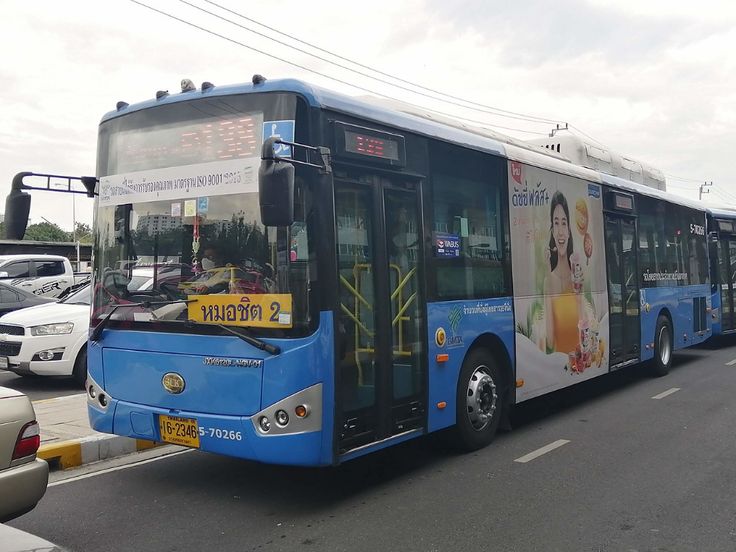
Trains in Thailand tend to be slow, but they’re an incredibly scenic option for getting around. Taking the train is a genuine experience, making the journey as much a part of your trip as the destination.
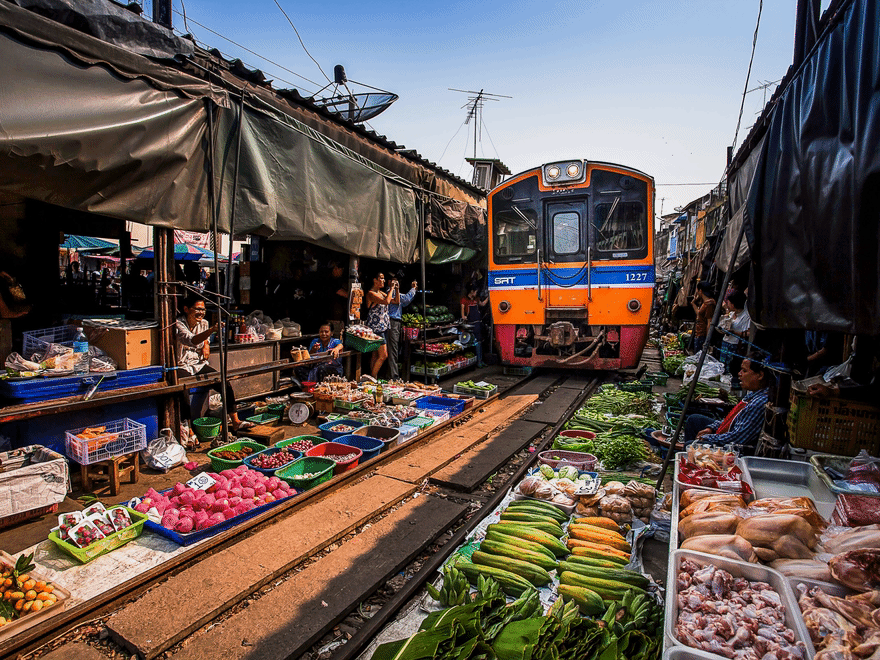
Buses in Thailand are incredibly cheap and a great way to get around the country. For intercity travel, you’ll pay more for better services like sleeper buses and air-conditioning.
Thailand’s best food is on the street, and it costs a fraction of a restaurant meal. Stick to street food if you’re on a budget. There are plenty of delicious curries and rice, fresh juices, and meat skewers. Eating around the markets is a must-do in Thailand. Really that’s where you’ll find the best food anyway.
You can also enjoy the Indian street food in Thailand at the best Indian restaurants with authentic spices in Thailand.